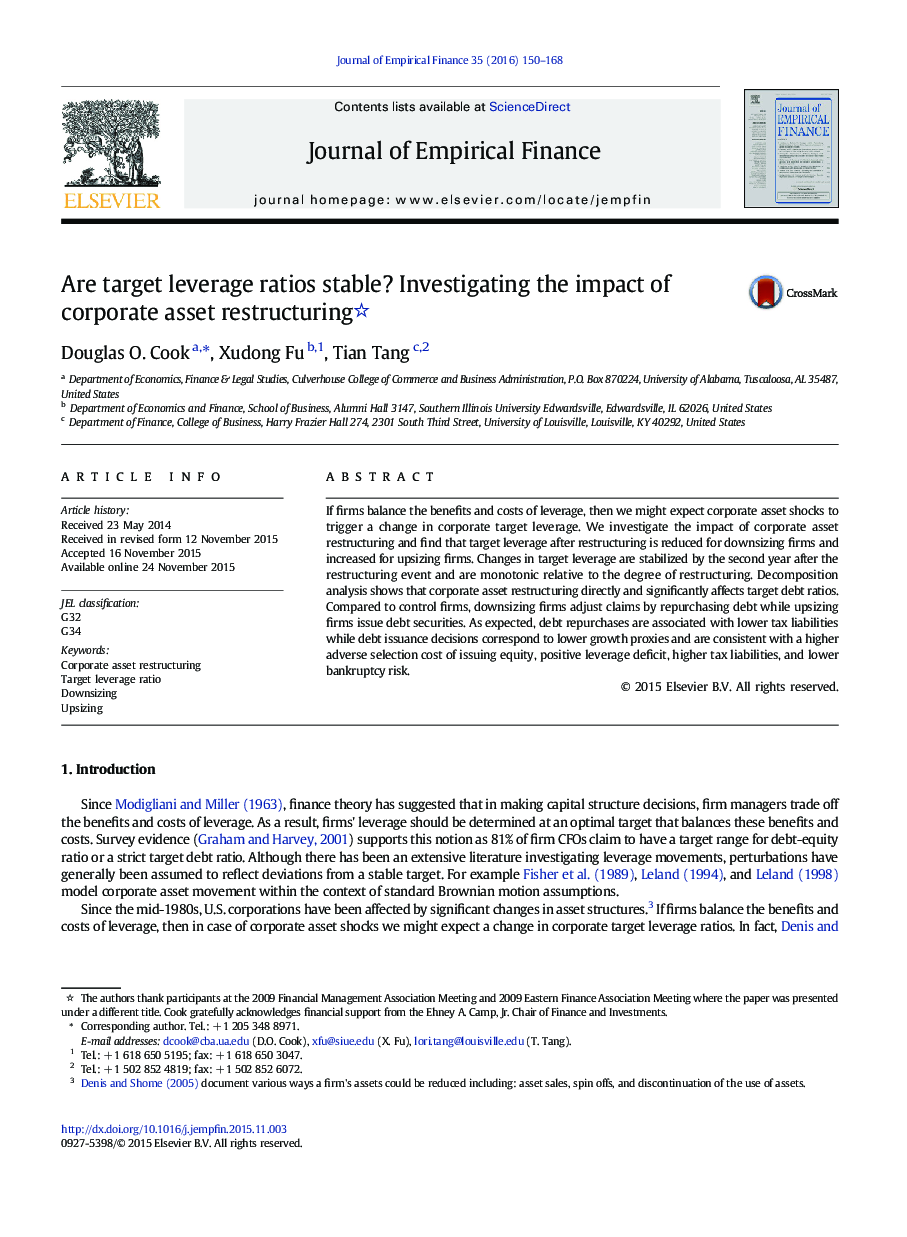| Article ID | Journal | Published Year | Pages | File Type |
|---|---|---|---|---|
| 958664 | Journal of Empirical Finance | 2016 | 19 Pages |
•The target leverage is reduced for downsizing firms after asset restructuring.•The target leverage is increased for upsizing firms after asset restructuring.•Target leverage changes are stabilized by the second year after restructuring.•Target leverage changes are monotonic relative to the degree of restructuring.•Downsizing (upsizing) firms adjust claims by repurchasing debt (issuing debt).
If firms balance the benefits and costs of leverage, then we might expect corporate asset shocks to trigger a change in corporate target leverage. We investigate the impact of corporate asset restructuring and find that target leverage after restructuring is reduced for downsizing firms and increased for upsizing firms. Changes in target leverage are stabilized by the second year after the restructuring event and are monotonic relative to the degree of restructuring. Decomposition analysis shows that corporate asset restructuring directly and significantly affects target debt ratios. Compared to control firms, downsizing firms adjust claims by repurchasing debt while upsizing firms issue debt securities. As expected, debt repurchases are associated with lower tax liabilities while debt issuance decisions correspond to lower growth proxies and are consistent with a higher adverse selection cost of issuing equity, positive leverage deficit, higher tax liabilities, and lower bankruptcy risk.
